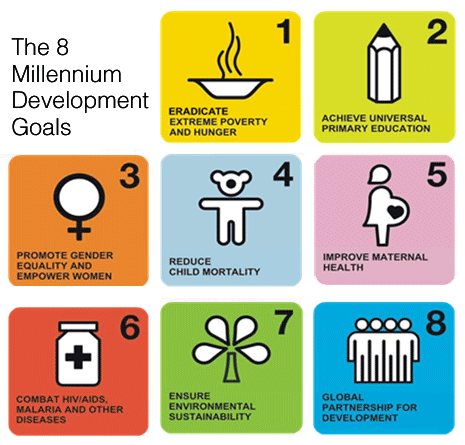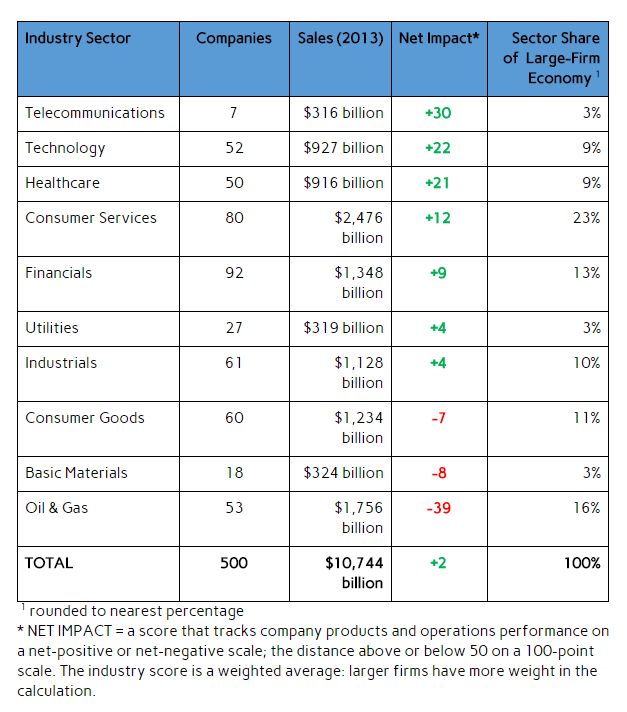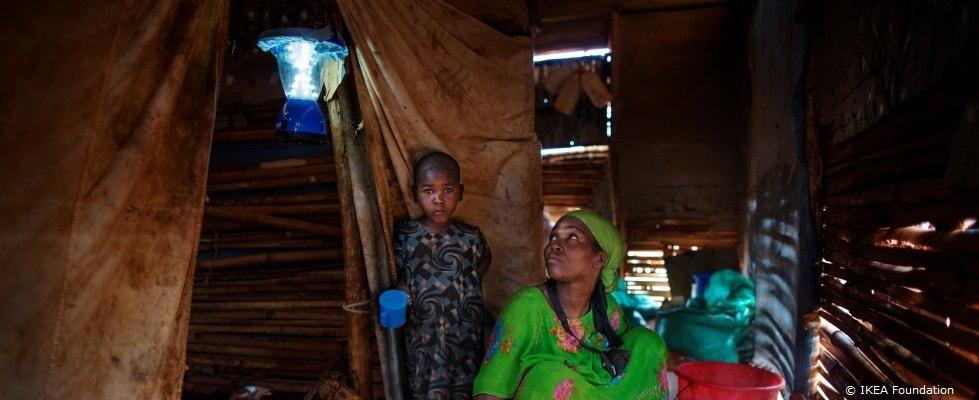What We’ve Learned About Collective Action on Water Stewardship


By Carlos Brito, CEO of Anheuser-Busch InBev
Earlier this year, the global water crisis was rated as the greatest risk to society by the World Economic Forum. Furthermore, according to the United Nations, by 2025, up to 2.4 billion people worldwide may be living in areas subject to periods of intense water scarcity. With worsening droughts from the southwest United States to southeastern Brazil, scarcity presents enormous challenges that go beyond access, impacting the quality of health and socio-economic prosperity in our communities. It also presents opportunities.
As the leading global brewer, we at AB InBev are committed to doing our part to help protect natural resources, such as water, for all users in the communities where our colleagues, partners and consumers live and work. Our dream is to be the best beer company bringing people together for a better world. Helping create positive social change inside and outside our brewery walls is part of our business strategy. Our strong legacy of water stewardship across our value chain and within our global communities is just one example of our dream in action.
While substantive reductions in water use are important within our breweries and barley fields, we are also focused on leveraging our scale to help make positive change in our communities. And collective action is critical to helping us make a sustainable impact, be it on water stewardship or beyond.
While each of our partnerships and projects is unique, there are key learnings that have helped us improve processes and strategies, allowing us to make an increasingly larger contribution to water stewardship:
It starts with a culture of ownership. At AB InBev, our culture drives performance and fosters sustainable practices. The same rigorous benchmarks and goals given to business outcomes are applied to efficient management of water and energy resources, as showcased by our achievement of two of our eight global environmental goals three years ahead of schedule. When sustainability is tied to performance, it empowers our colleagues to find innovative solutions through both internal and external partnerships. In this way, the power of collective action not only comes from our own efforts and commitment but also by incorporating the unique strengths of our partners.
It takes public-private partnerships. Our work on the Bacias Program in Brazil aims to better manage critical water basins near Jaguariúna to improve the quality and quantity of available water. The impact of this work has been strengthened through collaborations with The Nature Conservancy, the area mayor’s office, the Jaguariúna Bureau of the Environment, the Brazilian Agricultural Research Corporation, the Brazilian National Water Agency and the Piracicaba, Capivari and Jundiaí Watershed Committees. By collaborating with a variety of partners and considering the full spectrum of stakeholders, we have been able to simultaneously align efforts and leverage available resources to have a larger impact. We are now replicating this model across our company in water stressed areas. Only coordinated collective action can mitigate long-term risks.
It requires long-term thinking. More than ninety percent of our total water use is for growing barley and other agricultural inputs used in the brewing process. Short-term thinking is often the enemy of successful social and environmental programs, which is why our culture encourages our colleagues to roll up their sleeves and establish relationships and partnerships that will lead to long-term gains. This long-term thinking is why, in the U.S., we’re expanding our work with local stakeholders and universities to help farmers grow more barley with less water through the development and promotion of an irrigation scheduler program called AgriMet. In 2014, AB InBev funded the installation of six new AgriMet climate stations and incorporated 25 growers into the pilot within our Idaho farming community. Based on positive results, showing a 9% to 20% reduction in water use for participants, the pilot will be expanded to four additional AgriMet stations in Montana this year. We are also evaluating a portfolio of scalable projects in key growing regions around the world.
It is through partnerships like these that we are able to make real progress and positive impact, both inside and outside our brewery walls. Moving forward, we will continue working to sustain the momentum we’ve gained in water stewardship through collective action, improving the way we work with our partners and extending these learnings to other areas of our sustainability work.
Jane Fonda, Lily Tomlin Get Short Shrift from Netflix


Legendary actresses Jane Fonda and Lily Tomlin, stars of the Netflix original Grace and Frankie, are facing some good old fashioned wage inequality. Despite the fact that their characters take the lead in name and screen time, they are paid less than the male actors (Martin Sheen and Sam Waterson) who star in the show.
Fonda and Tomlin lead the show in a story of an unusual friendship between the classy yet stuck-up Grace and airy, hippie Frankie - two women thrust together because their husbands fall in love.
While Sheen and Waterson are instrumental in the development of the plot, it’s clear Fonda and Tomlin dominate the story and absolutely carry the show. Fonda and Tomlin's portrayals of their distinct and polarizing characters are something of a comedic genius. But they aren’t recognized rightly for it.
“That doesn’t make us happy,” Fonda said at a recent Netflix press event after finding out Sheen and Waterson make more money.
“No. The show is not ‘Sol and Robert,” Tomlin chimed in. “It’s ‘Grace and Frankie.’”
The fans aren’t responding lightly either, creating a petition for pay equality within the show. The petition’s goal is to garnish enough signatures and support that Netflix pays its stars what they deserve.
In 1980, Fonda and Tomlin co-starred alongside Dolly Parton in a comedy Nine to Five, illuminating sexism and bigotry in the workplace. Fast-forward 35 years, and the duo’s new project is still, ironically, falling short to equalize the pay for both the lead male characters and the lead female characters.
This isn’t the first time Hollywood is making headlines for not distributing equal pay to their top moneymakers. The emails released in the Sony hack, revealed that big-time actresses Jennifer Lawrence and Amy Adams were shortchanged in comparison to their male co-stars in the critically acclaimed film, “American Hustle.”
The petition for Grace and Frankie highlights the success that can come in speaking out by referencing Charlize Theron, who discovered she was making a whopping $10 million less than her co-star in “The Huntsman” and successfully challenged the moviemakers.
According to Forbes’ list of highest paid actors and actresses in Hollywood, the numbers aren’t even in the same ballpark. Angelina Jolie, the top-paid actress in 2013, raked in $33 million but that high number ties her for tenth on the list of highest paid actors. Among the list, men earn a collective $465 million between the top 10 while women pocket $181 million alltogether. Robert Downey Jr., Channing Tatum and Hugh Jackman’s total earnings in 2013 account for more than the top 10 women combined.
Just 12 percent of 2014’s top-grossing movies featured women protagonists, a four percent decline since 2002. Despite this low number, statistics may suggest having a woman play the lead role can be more cost-effective for moviemakers. In 2013, movies revolving around female characters made an average of $127 million while male-centered films made $95 million per movie.
The problem of pay inequality extends well beyond Hollywood. Women make less than men in nearly every job, according to a more than 500 occupations observed by the Bureau of Labor Statistics. Throughout her career, a woman will lose more than $430,000, enough to feed a family of four for 37 years, because of wage inequality. The gender gap is shrinking thanks to an increasing minimum wage state to state.
While Fonda and Tomlin likely won’t run out of food to eat because of these pay disparities, Grace and Frankie give us a good reason to see gender pay inequality in action.
Image credit: Netflix
Study Reveals Failure to Achieve U.N. Environmental Sustainability Goal


A recently released report from the International Institute of Sustainable Development (IISD) highlights the fundamental and inextricable links between healthy, diverse ecosystems and socioeconomic health and development.
Producing a statistical, point-by-point review and analysis of the global effort to achieve number 7 of the eight U.N. Millennium Development Goals (MDGs) – environmental sustainability – IISD found the strongest link to be the relationship between socioeconomic development and reducing maternal mortality and improving sanitation. IISD produced the report with the support of the U.N. Environment Program (UNEP).
“Protecting the integrity of forests, maintaining the health of fish stocks and keeping the ozone layer intact are of fundamental, not tangential, importance for human well-being,” IISD states in a news release. “This is particularly the case for the poorest and most vulnerable populations, who are the most likely to directly depend on the provisions of these aspects of the environment for their well-being and often survival. Efforts to reduce extreme poverty are inseparable from efforts to keep ecosystems and environmental conditions healthy and robust.”
UN MDG-7: Environmental sustainability: Progress and prospects
In its report, entitled “Global Goals and the Environment: Progress and Prospects,” IISD presents statistical evidence gathered from U.N. member nations worldwide. In its analysis, the Toronto-based non-profit research organization pinpoints which MDG-7 goals and targets “have been met, by when and where, and in what areas progress has been inadequate compared to national baselines.”
Establishing strong goals to enhance and maintain ecosystems and living conditions, and following through on them, “are a must for meeting some of the key human development objectives,” IISD highlights. Data from sub-Saharan Africa collected by IISD, for instance, reveal that the link between improved access to clean water and sanitation and improved maternal health is particularly strong.
Overall, global progress to achieve environmental sustainability as per four constituent goals and targets set out in MDG-7 “was uneven for most targets, and the indicators in this report confirm earlier observations that no target can be expected to be achieved everywhere.”UN MDG-7: Biodiversity, GHG emissions and Forests
Efforts to maintain biodiversity, for example, have failed. In fact biodiversity loss has continued to increase. That, scientists have warned, puts us in what may be the midst of a sixth great extinction – the first mass extinction event caused by human activities.
Similarly, efforts to halt the global rise in human-caused greenhouse gas (GHGs) emissions – the main driver of global climate warming – has failed. The global level of carbon dioxide emissions from fossil fuels increased significantly between 1990 and 2010, IISD points out in its report, rising from 21,550 to 31,387 million metric tons per year as of a 2013 U.N. report.
Reducing and stemming the global rate of deforestation is one of five key indicators for the MDG-7's main constituent sub-goal: integrating sustainable development into country policies and programs in order to reverse the loss of fundamental ecosystem/natural resources. IISD found that forested land area did not decrease significantly from the global perspective.
Significant differences in regional and national rates of deforestation and afforestation were apparent, however. Vietnam and Spain showed significant increases in forested land, for example.
IISD goes on to highlight the need for more and better data gathering and reporting in many U.N. member countries. According to IISD: “[C]onsistent reporting is constrained by persistent data limitations in many of the countries covered. In some cases, lack of reliable data represents a major constraint for reporting.
“Without a major effort to improve statistical data collection and observation systems, these problems will continue to persist and undermine the ability of countries to visualize their progress toward new goals.”
Providing the strategic development goals and a blueprint for all U.N. member nations the MDG initiative was launched with much fanfare at the beginning of the new millennium. Coverage of the environment, IISD points out, was “little more than symbolic and many key dimensions were not represented.”
With the MDGs expiring this year – many of them only partially realized – the U.N. is preparing for anticipated adoption of their successor, the Sustainable Development Goals (SDGs), during its General Assembly plenary session at U.N. headquarters in New York City this September.
*Image credits: 1) U.N.; 2), 3) IISD
Newsweek Ranks Environmental Performance of Top 500 Corporations


Ranking the environmental performance of the 500 largest U.S. and global corporations by market capitalization, on June 4th Newsweek on released the 2015 Newsweek Green Rankings. Based on research from Toronto's Corporate Knights Capital and HIP (Human Impact+Profit) Investor, Newsweek uses a weighted average of eight key factors – including energy, emissions and water productivity – to produce its annual ranking of corporate environmental performance.
Following are the top 10 corporations in the 2015 Newsweek Green Rankings for the U.S.:
- Biogen
- Allergan
- Adobe Systems
- Broadcom
- Sigma-Aldrich
- The Hershey Co.
- Ecolab
- Coca-Cola Enterprises
- Aflac
- Mead Johnson Nutrition
Providing more comprehensive, high-quality information on the environmental and social impacts of the world's largest corporations to investors is another guiding aim for Newsweek in producing its annual green rankings. “Investors all have the power to demand more information on the companies they invest in,” the organization states.
How “green” are the world's largest corporations?
The principal aim of Newsweek's annual corporate environmental impact assessments is “to describe environmental performance of each company’s operations, while also incorporating the impact of a company’s products and services on ecology and society,” the news and information services provider explains. “That’s why, for example, tobacco products are rated so low; they’d rank much higher if environmental impact was the sole consideration because their products are a leading contributor to causing cancer and spur high costs of healthcare.”
Numerous factors complicate making an "apples to apples" comparison of corporations' environmental performance. Corporate Knights Capital assembled an advisory panel of prominent environmental and sustainability experts to oversee the research and metrics that went into producing Newsweek's 2015 Green Rankings. Among advisory panel members were William McDonogh; L. Hunter Lovins; Kathleen Rogers, president of The Earth Day Network; and Michael Meehan, CEO of the Global Reporting Initiative (GRI).
In addition to energy, emissions and water productivity, waste productivity, “green” revenue, “green” pay, board oversight and evaluation mechanisms and audited environmental metrics factor into Newsweek's assessment of corporate environmental performance. Newsweek describes the research and methodology in full on its website.
As defined by Newsweek, “green” revenue is revenue derived from products and services that contribute to environmental sustainability and societal health. “Green” pay are mechanisms linking the pay of senior executives to corporate environmental performance.
"We know that large companies are starting to become more aware of their environmental footprints — for example, in developing this year's Green Rankings, we found that more and more firms are now linking executive pay to sustainability targets," Newsweek Senior Editor Elijah Wolfson was quoted in a press release. "The hope is that continuing to grade companies annually on these metrics as part of Newsweek's Green Rankings project will help hold them accountable for their impact on the environment moving forward."
Biogen topped both Newsweek's U.S. and global 2015 green rankings. Another biotech/pharmaceutical company, Allergan earned a second-place ranking in the U.S. ranking and ranked third globally. U.K.-based pharmaceutical company SHIRE PLC placed second in the global ranking.
“This helps to reduce risk (by knowing what you own) and better evaluate whether and how much to invest – and whether you want to be a customer of that company. We encourage investors to use the Green Rankings to evaluate how to invest, what to buy and where to shop. Greener choices can build a better world.”
*Image credits: Newsweek
GRI sets strategy to help business learn more from sustainability data


GRI, the international CR and sustainability reporting organisation, is responding to the changing reporting landscape with a new four-pillar strategy.
Speaking to Ethical Performance, Michael Meehan, GRI chief executive, said that the time had come for GRI to go beyond paper reports: "In our database we have over 25,000 reports. What do you do with that amount of data? You can use it to help organisations learn from others. Great corporate decisions are built on great data."
The four pillars comprise Enabling Smart Policy, More Reporters and Better Reporting, Moving Beyond Reports and Innovation & Collaboration. The first focuses on supporting sustainability reporting and disclosure around the world.
“For more than a decade, GRI has engaged with governments, capital markets and international organizations, who increasingly look to us for guidance on sustainability policy,” said GRI’s Deputy Chief Executive Teresa Fogelberg. “We will intensify our efforts to enable smart policy that can address some of the most pressing challenges of our time. These include climate change, human rights, corruption and many others.”
GRI’s second strategic priority is to continue building its global community of More Reporters and Better Reporting. Its aim is to encourage more organizations to begin sustainability reporting and for those that already do report, to strive for a better quality.
With the third pillar GRI hopes to ensure decision makers have access to the high quality and reliable information they are increasingly demanding. GRI believes there is much more value to be captured from the sustainability reporting process.
The fourth pillar is reliant on the first three: In order to fulfill those priorities, GRI will aim to cultivate a new spirit of collaboration and inclusiveness in the reporting field.
"GRI is the data engine that will drive these ambitions forward," Meehan added.
GRI will shortly be announcing the setting up of a new business unit together with news of a collaboration with a leading technology company to make sustainability information more accessible and comparable.
You can read GRI's updated strategy here.
Picture credit: dreamstime.com
Diversity: The Shaping of Modern-Day Leadership


The demands of the 21st century workplace are a world apart from those faced by our grandparents a few decades ago. And the challenges that a supervisor or manager faces in today’s industries are equally demanding.
The increasing reliance on cutting-edge technology in the workplace, changing employment trends and expectations, and the dynamics of a society that is more accepting of diversity in the workplace create both opportunities and difficulties for the new millennium manager.
Contract vs. employee in the 'at-will' workplace
In most states, employment is “at will,” meaning that the employer is not guaranteeing that the job, or the conditions of the job, will continue for a set period, unless that duration has been stated in a signed contract. All states, except Montana, have at-will laws in place. These laws often afford employers more latitude in how they manage employees. But over the years, they have also helped to create fertile ground for other anomalies of the U.S. labor scene: contract and temporary workers.
As little as 30 or 40 years ago, the concept of a contract or temporary worker, who fulfilled job duties without any or all of the promises of benefits afforded to his fellow employees, would have been rare. In 1983, temporary workers made up less than 1 percent of the labor force. Today, notes Danielle Kurtzleben, workers hired to fulfill temporary slots amount to more than 2 percent of the U.S. workforce.
Contractors also fill a significant portion of employment roles, as either skilled professionals who can fill a time-limited niche at the onsite office or as self-employed freelancers with a specific expertise. These independent contractors frequently work from home and for multiple employers.
This changing workforce means managers must have a clear understanding of federal and state employment laws that govern the use of contract workers. While work-at-will legislation does give the employer (in most cases) the right to say when the job is over, there are still stringent limitations on who an employer can define as a contract worker and what the manager can demand as part of the contract. From the IRS' point of view, whether the worker is classified as a contractor or employee often determines what taxes should be paid on behalf of the worker and what exemptions can be claimed by the employer. In many small businesses, this Rubik's cube of laws and procedures are a critical element to how the manager runs the office.
Low cost or labor intensive?
The trade-off to not having to pay for health care, sick time or holiday pay may seem appealing to many, but today’s managers often find their job duties comprise a much broader role of mentoring, tracking and organizing in their day-to-day supervisory skills than might be expected for offsite workers who are hired for their expertise.
Some small businesses have found setting up an agreed-upon communication plan is the ticket; others find that their preparatory written work, such as operations manuals, are the key to ensuring good performance. But most will agree that running an office, whether it is in a building or in the cloud, requires just as much supervisory prowess as it did in our parents' day.
Technology's higher learning curves
Technology is often seen as a boon for the employer who wants an easier means for tracking employees, finances and hiring. But as beneficial as the digital age has become, it presents huge educational and functional expectations for team leaders who may manage the bulk of their team's assignments by phone, email or social media. It means staying on top of cutting-edge technology that lends a supportive role to their business, such as mobile assessment tools that allow offsite applications and testing, but requires staff training and management at the head office.
Diversity in the 'new economy'
Social and cultural diversity continues to change U.S. societies in dramatic ways. For the average business, it means a broader range of ideas, innovations and perspectives to which to turn. "Pulling from a diverse demographic in terms of gender, ethnicity, age and disability gives companies a wider pool of talent to work with," says journalist Beth Winston. "Supervisors must be prepared to meet the needs and challenges of this newly diverse workforce."
More than a third of workers in the U.S. are people of color, according to a 2013 Bureau of Labor Statistics survey. Women represent an even greater percentage overall. More than half of the country's office, professional and managerial workforce were women in 2012 -- a huge shift from the 1950s, when less than a third of all women worked outside of the home.
And for the contemporary American business, learning how to manage such a diverse workforce is the key to marketplace success, says Glenn Llopis. "Diversity can no longer just be about making the numbers, but rather how an organization treats its people authentically down to the roots of its business model." So, how a company's management team leads its workforce can reflect on the values it wants to share as a business.
Multicultural often means multilingual
In some industries, cultural diversity places an increased demand on managers to be multilingual. While we commonly assume in the U.S. that everyone in the labor force speaks English, some businesses realize that there is an advantage to employing managers who speak a second or third language. One business I surveyed years ago when I was teaching Spanish at community colleges had come to the decision that if the majority of the applicants at that particular grocery store were Spanish-speaking immigrants, it made sense to have a training manager who could conduct orientation sessions and training for new hires in Spanish. Other companies have realized that there is a benefit to having a multicultural, multilingual workforce -- and a manager who can elicit and appreciate the skills of each member.
And the increasing role of individuals with disabilities in the workplace hasn’t just made offices more physically accessible, but it has also required managers to learn how to adapt job settings and requirements to meet the needs of a new, but growing, sector of workers.
X, Y and Z: The new millennium workforce
But the greatest shift for today’s team-leader may be reflected in the generations she manages. Generation X, Generation Y and the upcoming Generation Z all share a place in today's office -- and all bring their own educational, technological and seasoned insights to the table.
Today's manager recognizes that the new millennium workforce is more than a team of individuals. It is a microcosm of the global marketplace, where ideas and values are enriched by the diversity of backgrounds, identities and views they represent.
Image courtesy of MGM Resorts Foundation
Ikea Pledges $1.1 Billion for Climate Change Action


It is easy to mock Ikea for its cheap home decor and the missing screws in its assemble-yourself furniture packs, which many of us did not discover until that one-hour drive home from the blue-and-yellow superstore. But there are no screws loose in the company’s commitments to renewable energy, from wind power investments to solar panels atop its stores — the latter of which are available for purchase at some stores, too.
Now the company says it is ratcheting up its pledge to the tune of €1 billion ($1.1 billion) in new projects.
As announced last week, 60 percent of that commitment is for additional investments in clean energy projects. The remainder, which will go toward projects in areas most affected by climate change, will be through the company’s eponymous foundation.
According to Ikea, this €600 million pledge builds on the €1.5 billion the company has invested in wind and solar projects since 2009. The company already has over 300 wind turbines and about 700,000 solar panels at various stores worldwide. This new investment will overwhelmingly go toward wind power projects in the next five years; about €100 million of that will go toward solar installations, the company said. Considering how far the price of renewables have fallen in recent years, Ikea will get far more bang for its euro (or dollar, as it has made big gains on the euro in recent months).
It is actually through the Ikea Foundation, however, where this new pledge could have an even more meaningful impact. Renewables have proven to become the energy of choice in remote areas lacking grid access. Whether they are an easily copied, low-tech idea like Liter of Light or a pay-as-you-go innovation similar to M-Kopa, technologies such as solar have come a long way. Many of Ikea’s programs have focused on young women’s empowerment, disaster relief and refugee assistance, so this is a new trajectory for the foundation.
Ikea was not specific about how it will spend this €400 million, but it has said it will work with poor communities to implement clean energy technologies in schools, homes and businesses. The foundation’s close work with a bevy of well-known NGOs could turn what is now just a pledge into a huge success benefiting people who especially would benefit from access to energy.
Will this investment make much a difference? Ikea has done a fantastic job touting its environmental record, but its overall performance on the sustainability front has been mixed. The company was among the first retailers to sell compact fluorescent (CFL) and light-emitting diode (LED) light bulbs at a cheap price, which helped the push-to-start phasing out of incandescent bulbs. Its supply chain, however, has proven troublesome in the past, as some of its manufacturing practices and labor policies have raised eyebrows.
Nevertheless, considering the performance of the overall retail sector, Ikea once again has shown it is more of a leader than a follower.
Image credit: Ikea Foundation
This Wearable Device Helps You Ditch Air Pollution


A study conducted by the World Health Organization estimates that nearly 7 million people die prematurely from harmful air pollution each year. Nearly 200,000 of these deaths occur in the U.S. alone. As an increasingly volatile environmental health issue, poor air quality is a problem affecting nearly 25 percent of the world’s population.
One band of entrepreneurs and scientists plan to help individuals fight back with data-tracking technology that fits comfortably on your backpack. TZOA — an advanced enviro-tracker — uses internal sensors to measure air quality, temperature, humidity, atmospheric pressure, ambient light and UV exposure in a small, wearable device.
TZOA connects to a smartphone app that gives users pertinent information monitoring on air quality within their geographic location while providing actionable recommendations for improving air quality at home, such as: opening a window for better air circulation; encouraging sun exposure during the winter seasons; and selecting a “less polluted” route to activities.
“The ability to monitoring air quality is important for the management of allergies as well as understanding and mitigating the health risks associated with airborne pollution,” said Kevin R. Hart, TZOA co-founder and CEO.“As wearable tech and big data come together, TZOA is creating ‘citizen scientists’ to help affect social change. By letting people “see the air” we are educating them to become motivated to take personal actions that improves their environment. As we have seen with the water conservation movement, this in turn raises wider awareness and builds advocates to push for wider social change to combat this growing public health issue.”
The “citizen science” tool feeds directly to a crowdsourced map of real-time environmental data, providing critical information for both the general public and public healthcare providers to build effective, data-driven intervention strategies.
“Cleaning up the air we breathe prevents noncommunicable diseases as well as reduces disease risks among women and vulnerable groups, including children and the elderly,” said Dr, Flavia Bustreo, WHO assistant director-general for family, women and children’s health, in a news release. “Poor women and children pay a heavy price from indoor air pollution since they spend more time at home breathing in smoke and soot from leaky coal and wood cook stoves.”
Still in its beta-testing phase, TZOA can detect particulate matter (the allowable amount of hazardous particles in the air) PM10, which indicate particles such as pollen, dust, asbestos and mold. It also detects PM2.5 particles that are finer and can embed in lungs and pass into the bloodstream.
Key facts about the TZOA device:
- The tracker features research-grade sensors to track air quality and a range of environmental indicators such as temperature, humidity, atmospheric pressure, ambient light and UV sun exposure.
- Miniaturized fans suck air into the device and which then passes through tiny laser based optical sensors that use light scattering technology and advanced algorithms to count and size particulate matter (PM).
- Data is sent to the TZOA app that provides real-time and historical stats as well as actionable steps they can take to improve air quality.
This wearable technology and the massive data-mapping it seeks to cultivate could potentially impact sustainable measures and practices to help reverse the narrative of air quality related deaths for the most vulnerable people around the world.
While creative, innovative and arguably necessary, the high-tech solution begs the question as to whether it will directly benefit those that will need it the most and may not have smartphones or the funds to purchase the device (slated to sell for $99).
Image credit: TZOA
Turning the Ocean Liner Around: Coca-Cola Shows How It's Done With New PlantBottle


Coca-Cola is one of the most frequently written-about companies in TriplePundit history, and for good reason. Coca-Cola has racked up a long list of corporate social responsibility (CSR) credits that just can't be ignored, even thought its signature brand belongs to a beverage category that is linked to a history of health and environmental issues including waste disposal, water resources and a large carbon footprint, partly due to the use of petroleum-based packaging.
Turning an ocean liner around is an apt metaphor for the work involved in creating a new legacy for soft drink companies. Coca-Cola does invest significant resources in effective CSR initiatives (the RAIN initiative is just one example), but nobody's going to notice unless you combine that with marketing savvy.
Coca-Cola has a powerful sense of its legacy status as an iconic American brand, and it is constantly evolving to achieve the same intimate relationship with its customers in other countries. That necessarily involves a keen awareness of global trends and concerns, and that brings us to Coca-Cola's PlantBottle, which just got a splashy relaunch at the World Expo in Milan last week.
PlantBottle progress
TriplePundit first took note of PlantBottle back in 2009, when Coca-Cola introduced its new beverage packaging. At its launch, the new bottle consisted of up to 30 percent bagasse, the waste fiber left over from sugar cane processing. Rather than licensing bioplastic technology from a second party, Coca-Cola funded its own cutting-edge research for the project.
Since 2009, PlantBottle has been introduced into more than 40 countries, according to the company, to the tune of 35 billion bottles. As of last year, PlantBottle has been used in 30 percent of Coca-Cola beverages sold in the U.S. and Canada.
As of this writing, PlantBottle still only accounts for 7 percent of the company's packaging globally, but that adds up to a significant amount of avoided annual carbon dioxide emissions.
Coca-Cola has now stepped it up with the new relaunch of its PlantBottle. Pushed along by Coca-Cola's investments in the biotech companies Virent, Gevo and Avantium, the new PlantBottle achieves 100 percent bio-based material.
In addition, Coca-Cola has set a high goal for transitioning over to PlantBottle globally, from the current 7 percent level to 60 percent by 2020.
Progress beyond PlantBottle
That's just for starters. Instead of keeping its bioplastic technology to itself, Coca-Cola licenses it out to other market sectors. So far, that includes H.J. Heinz for ketchup bottles and the Ford Motor Co. for interior fabrics. Busch Gardens and the somewhat problematic SeaWorld theme parks have also adopted PlantBottle for plastic cups.
Coca-Cola also shares three lessons it learned from PlantBottle in an article on the company's website last year.
First, it learned that bio-based packaging can be a super-effective marketing tool; second, that sinking R&D dollars into new, more sustainable packaging technology can yield bottom-line payoffs as production revs up to commercial scale; and third, that a commitment to sustainable packaging can provide a platform for building stronger relationships with the environmental, scientific and academic communities.
That third item illustrates how Coca-Cola looks to the future for cues on its sustainability initiatives, and the company already foresees a new set of challenges to face.
As the global market turns away from petrochemicals in favor of bio-based products, the competition for biomass, land and water will grow. Currently the main area of contention is between food and non-food crops. In the future, there will be competition within the non-food crop sector as the market grows for all manner of bio-based products, including biofuels, "green" chemicals and pharmaceuticals, as well as bio-based packaging and other products.
To keep moving forward, Coca-Cola has partnered with the World Wildlife Foundation in an initiative to develop sustainable agriculture principles for bio-based products. The company is also looking at other plant waste alternatives aside from bagasse, including barks, stems and peels.
Ironic or not, here comes PlantBottle
One other lesson that Coca-Cola has learned is that effective sustainability initiatives can enable a company to tie its name to other high-profile endeavors, even if the relationship appears to be an awkward fit at first glance.
The Milan World Expo is a perfect example. The theme of the Expo is "Feeding the Planet, Energy for Life," so you might not expect the event to have an official soft drink partner.
However, it does -- and that partner, of course, would be Coca-Cola.
When you look at Coca-Cola's plans for its corporate pavilion at the Expo, though, you can see how the company has developed a blueprint for the future:
"Coca-Cola believes the most profound and impactful innovations over the next decade and beyond will emerge at the intersection of sustainability and the value chain," the company said. "For this reason, Coca-Cola is working to embed sustainability-minded innovations at global and local level, into every aspect of its business, from sourcing ingredients to increasing beverage options to aspiring to be water neutral and recovering packaging."
20-Year-Old Designs System to Clean Up Plastic Ocean Trash


Our affection for plastic has put the world’s oceans in a big fix. At even the most remote beaches and islands, plastic in all forms -- from toys to water bottles -- are a common sight as trash washes up just about everywhere. Some estimate the amount of plastic in the oceans equals five grocery bags per foot of coastline across the world.
But Boyan Slat, a 20-year-old Dutch national, believes he has invented a system that can help confront this mess. What is even more promising is that its design runs passively and requires relatively little equipment.
Slat founded the Ocean Cleanup, an NGO based in Delft, Netherlands, which aims to start the largest ocean recovery project in history. The organization is joining a bevy of other projects that have certainly been well-intended and ambitious, but involve efforts akin to taking a butter knife to a gun fight.
For example, the home cleaning products brand Method has manufactured bottles out of plastic harvested from the Pacific Garbage Patch, a floating mass of debris estimated to be larger than the state of Texas. And to take on the problem of unwanted fishing equipment, the Global Ghost Gear Initiative is trying to launch a multi-stakeholder program to cope with the problem of nets and traps being dumped into the oceans. Nevertheless, this crisis keeps worsening.
With over 5 trillion pieces of plastic mucking up the world’s oceans, thanks to the 8 million metric tons of plastic ending up in the oceans annually, everyone agrees ocean trash has resulted in a variety of health, economic and environmental problems. Of course, the easiest ways to solve this problem would be to reduce plastic consumption and convince people to stop littering in the first place. But the amount of garbage already in our oceans is staggering, and that is where the Ocean Cleanup enters.
Conventional wisdom holds that harvesting this plastic would require endless fleets of boats and nets and, of course, energy and massive amounts of revenues no one is willing to spend. Slat’s idea suggests that, instead of deploying resources into the oceans to remove the trash, we simply use the ocean’s currents to clean them instead.
Long floating booms would concentrate plastic trash as currents flow through them. In theory, currents would flow through these barriers, trapping plastic while marine life would pass under the booms, avoiding the problems of bycatch. The lightweight plastic would meanwhile collect in the floating barriers. According to the Ocean Cleanup’s research, a 62 mile (100 kilometer) barrier would remove 42 percent of the Pacific Garbage Patch, or about 160 million pounds (72.3 million kilos) of plastic debris, after 10 years. The technology would be economical, too: The organization estimates the cost to clean up the plastic would be approximately $2.30 a pound (€2.07, or €5.03/$5.59 a kilogram).
To test this theory, a pilot version of this concept will be launched in the Korea Straight between Japan and South Korea. With a span of 2,000 meters (1 ¼ miles), the Ocean Cleanup Array will operate for at least two years off the Japanese island of Tsushima. Deployment is scheduled for the second quarter of 2016.
Considering Japan’s struggles with plastic trash, especially after the 2011 Tohoku earthquake and tsunami, the Ocean Cleanup has found the perfect laboratory before the organization sets its sights on the greater Pacific Ocean. Tsushima officials have estimated the amount of plastic that has washed up on its shores is about 1 cubic meter per person — daunting when one considers the island’s population is about 40,000. Researchers are currently evaluating whether the salvaged trash can be used as feedstock to generate energy.
The Ocean Cleanup’s goal is to have its 62-mile long array operational in the Pacific within five years. Engineers plan to launch incrementally larger arrays in the interim, and an expedition is scheduled to cross the Pacific later this summer.
These long arrays may only prove to be part of the solution, as many experts say most of the plastic pieces floating in the oceans are less than 5 millimeters in size. Nevertheless, this relatively simple technology could go a long way toward solving a problem that almost everyone else finds too complicated, or expensive, to tackle.
Image credit: The Ocean Cleanup